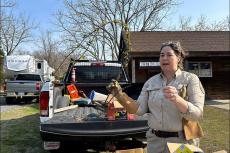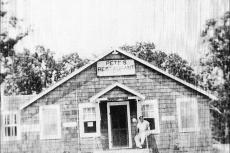As more than 24,000 trees have been removed because of an infestation of Asian longhorned beetles, the United States Department of Agriculture is urging Long Island residents to check their trees for the insect.
“You can help us protect more trees and eliminate the beetle from the United States,” Josie Ryan, the national operations manager of the agency's Animal and Plants Health Inspection Service, said. “If you take a walk, take a look.” Adult beetles have shiny black bodies with white spots, black and white antennae, and six blue legs.
“The sooner we spot the beetle, the sooner we can help stop its spread.”
The invasive, wood-boring Asian longhorned beetle strikes 12 kinds of trees in North America. Once a tree becomes infested, it cannot recover and it dies. When the insect is a larva, it feeds inside the tree, creating tunnels. A few months later, adults chew their way out, leaving ¾-inch exit holes. Then they eat the leaves and bark and finally lay eggs to continue the cycle.
To help stop the spread, check trees for exit holes or egg sites, and limit the movement of firewood (a host site for the beetle). If you have found tree damage or a beetle, call the Asian longhorned beetle hotline at 1-866-702-9938 or submit an online report at AsianLonghornedBeetle.com. Photograph the beetle or tree, and if possible trap the beetle in a container and freeze it to preserve it for identification.
Asian longhorned beetles have been eradicated in Illinois, New Jersey, Boston, New York City’s five boroughs, Islip, and towns in Ohio.




